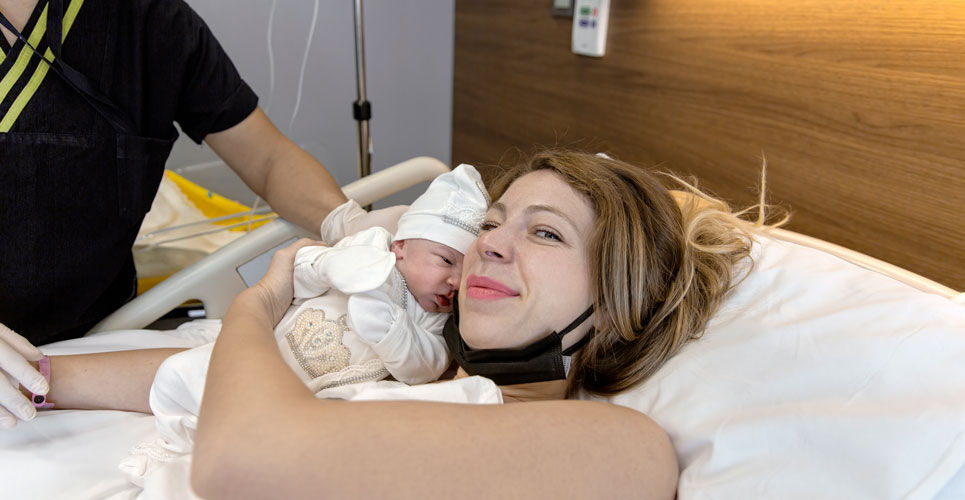An analysis shows a low incidence of COVID-19 infection in babies born to infected mothers and which is influenced by several maternal factors
A low incidence of COVID-19 among the offspring of mother infected with the virus has been observed in an analysis of births, and while this confirms the mother-to-child route of transmission, the extent of this positivity is strongly influenced by several maternal factors. This was the conclusion of a systematic review by researchers from the WHO Collaborating Centre for Global Women’s Health, Institute of Metabolism and Systems Research, University of Birmingham, Birmingham, UK.
The transplacental transmission of COVID-19 from infected mothers is known to occur and there is evidence from a systematic review in 2021 that vertical transmission of COVID-19 is possible but that it only occurs in a minority of cases of maternal infection in the third trimester. Although COVID-19 antibodies have been identified in human breast milk, the timing of infection is not always clear, i.e., whether an infant became infected within the uterus or soon after birth.
For the present living systematic review, researchers set out to determine the rates of COVID-19 positivity in babies born to mothers who were infected with the virus as well as the timing of infection. In addition, they also sought to examine whether there were specific maternal factors associated with infection in babies, for example, the severity of illness in the mother.
The team undertook a comprehensive literature review and included studies of pregnant and recently pregnant women who sought hospital care for any reason but who had a positive diagnosis of COVID-19 infection and where the infection status of their offspring was also reported.
Low incidence of COVID-19 in offspring
The authors included 472 studies which consisted of 206 cohort and 266 case series and case reports with 28,952 mothers and 18,237 babies.

Based on PCR confirmed positivity, there was a low incidence of COVID-19 (1.8%, 95% CI 1.2 – 2.5%) among all the 14,271 babies born to mothers who were infected with the virus.
There was also low level of IgM COVID-19 antibodies (2.6%, 95% CI 0.5 – 5.6%) detected in babies who were tested. In mothers who tested positive in the antenatal period, the positivity rate was 1.3% and 0.9% among babies tested within the first 24 hours of birth.
Overall, in 592 positive babies for which information on the timing of exposure was available, 14 had a confirmed mother-to-child transmission, 7 in utero, 2 intrapartum and 5 during the early postnatal period. Additionally, among 800 COVID-19 positive babies with outcome data, 20 were stillbirths, 23 were neonatal deaths, and 8 were early pregnancy losses.
The researchers identified several important maternal factors associated with a postnatal diagnosis of COVID-19 in babies. For example, the presence of severe COVID-19 infection in mothers (odds ratio, OR = 2.36), maternal admission to an intensive care unit (OR = 3.46) and maternal death (OR = 14.09) were all significantly linked to a higher risk of positivity among offspring. However, the timing of maternal infection, i.e., post or antenatal, had no significant effect on offspring positivity.
The authors concluded that there was a low incidence of COVID-19 in babies born to mothers infected with the virus, and that while vertical transmission is possible, it occurred at a low level.
Citation
Allotey J et al. SARS-CoV-2 positivity in offspring and timing of mother-to-child transmission: living systematic review and meta-analysis BMJ 2022

